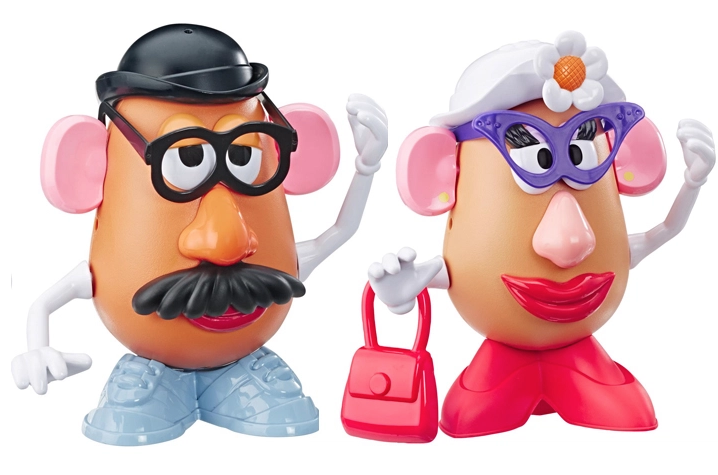Hasbro’s Mr. Potato Head gets a gender-neutral brand revamp
The iconic toys, which appeared in the Toy Story films, are about to get a gender-neutral brand revamp, dropping its prefixes “Mr.” and “Mrs.” to promote gender equality and inclusion.
In a statement, Hasbro assures customers, that although it is officially renaming the toy brand to “Potato Head,” the iconic characters Mr. and Mrs. Potato Head are not going anywhere and will carry the same name.

Mr. and Mrs. Potato Head, first introduced in 1952, are potato-shaped toys that come with detachable plastic body parts, clothes and accessories.
Later this year, the toy maker will launch a “Create Your Potato Head Family” play set that will “celebrate the many faces of families.” It will contain two large potato bodies, one small potato body and 42 accessories.
The new play set will let kids to create and mix-and-match the toy pieces so they will look like the family that they have, without being tied up to gender binary roles.

LGBT advocacy organization GLAAD praised the toy maker’s move by introducing the more inclusive play set.
“Hasbro is helping kids to simple see toys as toys, which encourages them to be their authentic selves outside of the pressures of traditional gender norms,” said GLAAD’s Rich Ferraro in a statement.
In the past few years, there has been a push for inclusivity in the toy industry.
In 2019, Mattel, the makers of Barbie, introduced gender-neutral dolls called “Creatable World” dolls, which were available in different skin tones, hair types and several wardrobe options that allows kids to style the doll however they want it, “with short or long hair, or in a skirt, pants or both.”
Mattel also released last year a line of Barbie dolls with no hair, a prosthetic limb and vitiligo (a disease that causes loss of skin color in patches). The move, according to a New York Times report, is a way for the company to “shift away from Barbie’s image as the impossibly thin blonde icon blamed for distorting young children’s idea of beauty, skin tone and body shape.”
Banner and thumbnail photos from Hasbro


